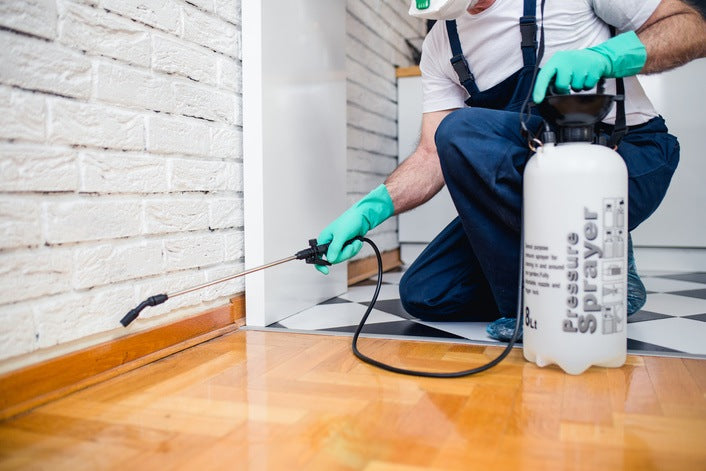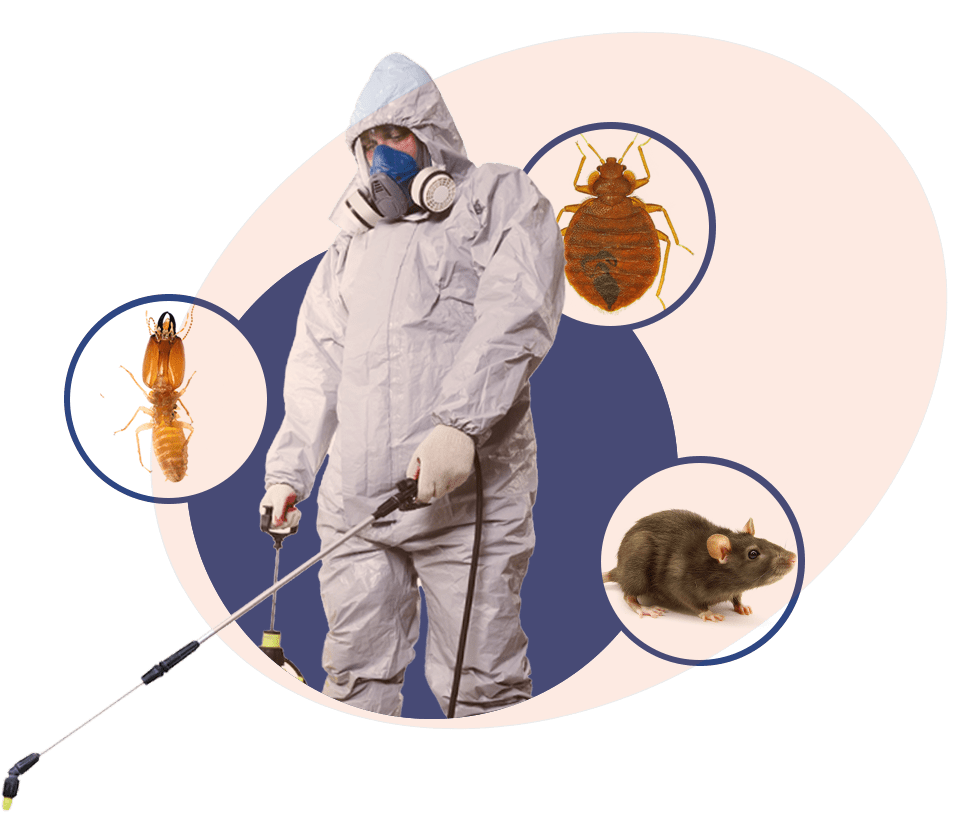Fast and Dependable Pest Removal Services with Pest Control Lockhart
Fast and Dependable Pest Removal Services with Pest Control Lockhart
Blog Article
Discovering Invasion and Therapy Techniques on the planet of Pest Control
The landscape of pest control incorporates a myriad of challenges, specifically as problems of typical house insects remain to advance. Understanding the actions and reproductive patterns of these nuisances is critical for establishing effective treatment approaches. By integrating safety nets with advanced administration strategies, such as Integrated Insect Administration (IPM), home owners can better secure their settings. Nonetheless, the effectiveness of these techniques might differ dramatically based on particular scenarios. What hidden variables add to the success or failing of these techniques in various settings?

Typical Home Pests
When it involves handling our space, understanding usual family insects is essential. These parasites not just disrupt our convenience however can additionally present health and wellness threats and damage residential or commercial property. One of the most common household parasites include ants, roaches, rodents, termites, and bed pests.
Ants, commonly seen foraging in kitchens, can pollute food and develop huge swarms. Rodents, including mice and rats, can trigger architectural damages and lug diseases like hantavirus and salmonella.
Recognizing the indications of these bugs, such as droppings, nests, or bite marks, is crucial for early treatment (Pest Control Lockhart). Appropriate sanitation methods, sealing entrance factors, and preserving a clutter-free setting work preventative measures. By determining these common family insects and recognizing their behaviors, home owners can take proactive actions to mitigate invasions, ensuring a healthier living setting
Understanding Parasite Infestations
Pest invasions can rise rapidly, transforming a small inconvenience right into a significant problem otherwise resolved quickly. Recognizing the nature of these infestations is important for reliable management. Insects can get into household and commercial spaces for different factors, consisting of the look for food, shelter, or breeding grounds. Typical aspects adding to infestations include poor cleanliness, architectural susceptabilities, and seasonal adjustments that drive parasites indoors.
Recognizing the sort of parasite is crucial, as various types display different behaviors and reproductive rates. For example, rats might develop nests in concealed areas while insects like cockroaches grow in wet settings. Early discovery typically rests on recognizing indicators such as droppings, munch marks, or uncommon sounds, which can indicate a trouble before it becomes extreme.
Warm, moist climates can facilitate the quick development of parasite populations, while adjustments in landscape design or building can inadvertently create helpful environments. An enlightened strategy to recognizing these characteristics lays the groundwork for reliable insect administration approaches in the future.
Treatment Techniques and Strategies
Reliable treatment techniques and methods are essential for reducing bug problems and restoring a safe atmosphere. A diverse strategy is often best, incorporating chemical, biological, and mechanical methods customized to the details parasite and the severity of the infestation.
Chemical treatments include the use of insecticides and herbicides, which can successfully get rid of bugs. Nonetheless, correct application and adherence to safety and security standards are crucial to minimize risks to humans and non-target organisms. Integrated Parasite Monitoring (IPM) motivates the sensible use of chemicals as a last resource, relying instead on surveillance and limit degrees to figure out intervention needs.
Biological control approaches include introducing all-natural predators or bloodsuckers to decrease pest populaces. This method is significantly prominent, particularly in farming settings, as it advertises environmental sustainability.
Mechanical approaches, such as traps and obstacles, offer prompt relief from parasites without introducing chemicals. Alternatives include sticky catches for insects or physical obstacles for rodents.
Inevitably, the choice of therapy method must consider the certain pest, the atmosphere, and possible influence on human wellness and communities. A well balanced combination of these strategies can successfully manage invasions while advertising long-term insect control remedies.
Preventive Procedures for Residence
Proactively dealing with bug concerns before they intensify is essential for maintaining a healthy home atmosphere (Pest Control Lockhart). Applying effective precautionary procedures can significantly decrease the probability of problems, inevitably safeguarding both your residential property and health

Appropriate landscape design likewise plays a vital function in avoidance. Keeping shrubs and trees trimmed away from your home reduces the opportunities of parasites locating their means inside your home. Make certain that drain systems are working efficiently to prevent standing water, which you could try here can attract in mosquitoes and other pests.
Finally, routine inspections are suggested. On a regular basis inspecting for signs of parasite task enables very early intervention. By adopting these safety nets, homeowners can develop an atmosphere that is much less welcoming to pests, therefore improving their total lifestyle and reducing the demand for comprehensive pest control treatments.
Commercial Bug Control Approaches
An extensive approach to industrial pest control is necessary for businesses intending to maintain a risk-free and sanitary environment. Efficient strategies include a mix of regular assessments, employee training, and the application of Integrated Parasite Management (IPM) methods.
Normal evaluations allow very early detection of bug task, allowing for timely treatment. Organizations should establish a regular timetable for these assessments, focusing on high-risk areas such as kitchen areas, storage spaces, and waste disposal websites. Worker training is similarly essential; staff must be enlightened on the indicators of insect invasions and the importance of reporting them promptly.
Applying IPM practices helps find more info alleviate bug concerns sustainably. This consists of environment modification, such as sealing entry points and decreasing clutter, in addition to utilizing natural deterrents before turning to chemical treatments.

Additionally, working together with an accredited bug control provider ensures access to expert knowledge and innovative therapy alternatives. This collaboration can cause personalized insect control plans tailored to the specific demands of the organization, decreasing threats and enhancing general effectiveness. Eventually, a positive and educated approach cultivates a pest-free setting, securing both public wellness and company reputation.
Conclusion
To conclude, reliable bug control necessitates a comprehensive understanding of usual click for info family insects and their behaviors, paired with targeted treatment approaches. Carrying out safety nets along with treatment strategies such as Integrated Bug Management and organic control improves the capacity to alleviate infestations. Routine evaluations and a mix of chemical and mechanical services better add to maintaining pest-free atmospheres. Ultimately, an all-round approach to pest monitoring is important for guarding living spaces from undesirable intruders.
Report this page